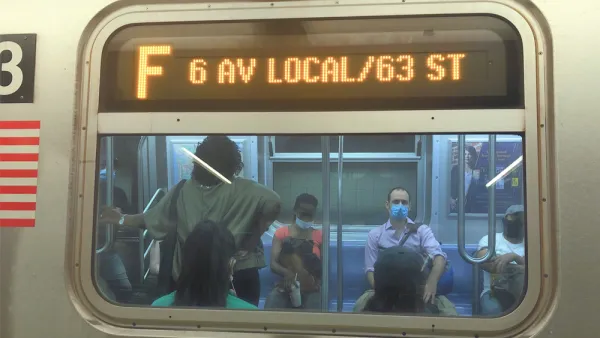As the U.S. House of representatives approved the passive stimulus package approved by the U.S. Senate earlier in the week, more details emerged about the parts of the bill that will be relevant to planners during the coming weeks and months.
Planetizen coverage of the federal stimulus package focused on initial reports about funding for public transit and housing relief shortly included in the package approved by the Senate on March 25.
With the House of Representatives approving the package on Friday, more details are available about the portions of the package that will be relevant to the efforts of planners to provide relief during the economic and public health crises of the coronavirus pandemic.
On March 26, the Planners' Advocacy Network of the American Planning Association (APA Advocates) hosted a virtual discussion to react to the stimulus bill, which you watch above. On March 27, APA Advocates posted a Twitter thread with specific information about the provisions included in the stimulus package.
The U.S. House of Representatives is preparing to vote on the CARES Act, which will provide communities with immediate #Coronavirus relief. Here's everything planners need to know. #CARESact
thread below (1/16)— APAadvocates (@APAadvocates) March 27, 2020
On March 25, the International Economic Development posted a pdf that lists the specific provisions in the bill designed to support the economy and ease the burden of the pandemic for families and workers.
For a higher level perspective on the bill, see also analysis by Kelsey Snell, for NPR, which breaks down the bill's spending by group: 1) 560 billion for individuals, $500 billion for big corporations, $377 billion for small businesses, $339.8 billion for state and local governments, $153.5 billion for public health, $43.7 billion for education/other, and $26 billion for the safety net.
The approved bill will be known as the CARES Act, short for the the Coronavirus Aid, Relief, and Economic Security Act.
FULL STORY: What's Inside The Senate's $2 Trillion Coronavirus Aid Package

National Parks Layoffs Will Cause Communities to Lose Billions
Thousands of essential park workers were laid off this week, just before the busy spring break season.

Retro-silient?: America’s First “Eco-burb,” The Woodlands Turns 50
A master-planned community north of Houston offers lessons on green infrastructure and resilient design, but falls short of its founder’s lofty affordability and walkability goals.

Delivering for America Plan Will Downgrade Mail Service in at Least 49.5 Percent of Zip Codes
Republican and Democrat lawmakers criticize the plan for its disproportionate negative impact on rural communities.

Test News Post 1
This is a summary

Test News Headline 46
Test for the image on the front page.

Balancing Bombs and Butterflies: How the National Guard Protects a Rare Species
The National Guard at Fort Indiantown Gap uses GIS technology and land management strategies to balance military training with conservation efforts, ensuring the survival of the rare eastern regal fritillary butterfly.
Urban Design for Planners 1: Software Tools
This six-course series explores essential urban design concepts using open source software and equips planners with the tools they need to participate fully in the urban design process.
Planning for Universal Design
Learn the tools for implementing Universal Design in planning regulations.
EMC Planning Group, Inc.
Planetizen
Planetizen
Mpact (formerly Rail~Volution)
Great Falls Development Authority, Inc.
HUDs Office of Policy Development and Research
NYU Wagner Graduate School of Public Service





























